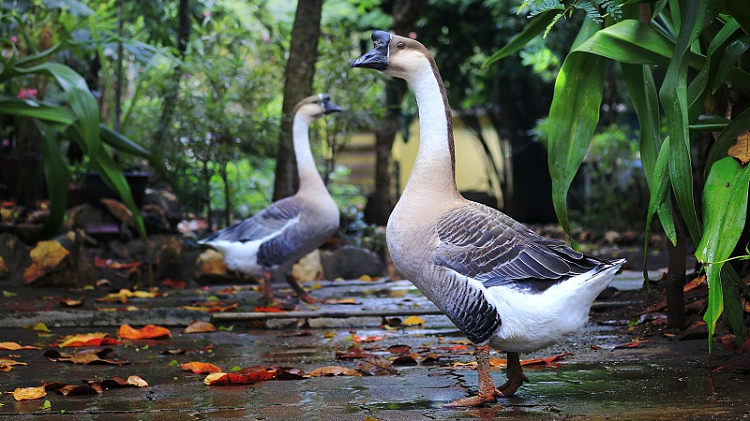
China Releases Updated Biodiversity Conservation Strategy and Action Plan for 2023-2030
China’s Ministry of Ecology and Environment released the China Biodiversity Conservation Strategy and Action Plan (2023-2030) on January 18, 2024. This plan outlines a road map for biodiversity conservation in the coming years, aligning with the Kunming-Montreal Global Biodiversity Framework.
This marks the third biodiversity conservation strategy and action plan China has ever issued. The first, the China Biodiversity Conservation Action Plan (CBAP), was released in 1994, two years after the UN Rio Conference in Brazil.
In April 2007, the Department of Nature and Ecological Conservation of the then Ministry of Environmental Protection initiated the preparation of a new action plan titled China’s Biodiversity Conservation Strategy and Action Plan (2011-2030). It was adopted by the State Council on September 15, 2010.
The 2010 action plan, guided by the the scientific perspective of development, emphasized the role of science and technology, as well as the training of human resources in biology, ecology and environmental sciences for biodiversity conservation.
In the same year, the Nagoya Protocol on Access and Benefit-Sharing of Genetic Resources and Associated Traditional Knowledge was adopted at the CBD’s COP 10 in Nagoya, Japan. Consequently, the 2010 version of China’s Strategy and Action Plan also covered the protection and benefit-sharing of germplasm genetic resources and associated traditional knowledge, along with research, documentation and database construction of traditional knowledge related to genetic resources, and the establishment of related policies and systems. Following this, Chinese provincial governments launched their own regional biodiversity conservation strategies and action plans.
On October 8, 2021, the Chinese government released its first white paper, “Biodiversity Conservation in China”, systematically introducing China’s concepts, policies, initiatives and progress in biodiversity conservation. The white paper highlighted China’s enactment and implementation of the Biosafety Law in 2020, elevating biosafety to the status of state security. It also demonstrated China’s ambitions and stance on biodiversity conservation as the COP 15’s presidency. On October 12, 2021, at the Leaders’ Summit of the first phase of the COP15 Conference, China announced the establishment of the Kunming Biodiversity Fund, affirming its support for biodiversity conservation in areas such as research, exchange, conferences and knowledge sharing.
Compared with the 2010 version of the action plan, the updated plan for this year has added many new elements. These include incorporating President Xi Jinping’s catchphrase “lucid waters and lush mountains are invaluable assets,” establishing a coordination mechanism under the State Council to strengthen biodiversity conservation, and setting up a system of nature reserves with national parks as the main body.
Among the priority actions, the new version proposes a diversified investment and financing mechanism. It suggests “exploring the consideration of biodiversity factors in the green financial system, incorporating biodiversity conservation into the Catalogue of Projects Supported by Green Bonds, and mobilizing more social funds to support biodiversity conservation. Deepening the payment for ecosystem services mechanism and exploring the establishment of a market-based compensation mechanism for biodiversity conservation and restoration.”
One of the actions mentioned in the 2010 version, “assessing the impact of bio-fuel plantation on biodiversity” has been omitted from the updated plan. The destruction of native forests and biodiversity caused by bio-fuel plantation has been internationally recognized, and environmental groups have been campaigning against it for years.
The new action plan continues the emphasis on public participation in biodiversity conservation, while also calling for corporate action. It encourages companies to develop their own biodiversity conservation action plans and join the Global Partnership for Business and Biodiversity (GPBB) initiative launched by the CBD secretariat. It also suggests “Promoting the inclusion of biodiversity-related information in the legal disclosure of corporate environmental information and the content of their supervisory and management activities, as well as corporate sustainability reports such as environmental, social, and governance (ESG) reports.”

In the area of synergistic management of biodiversity and climate change, the new plan mentions exploring nature-based solutions (NbS) and ecosystem-based approaches (EbA), both of which are recent trends.
Provincial environmental authorities in China have already begun formulating biodiversity conservation strategies and action plans for 2023-2030 in their respective regions. Hainan Province issued its Biodiversity Conservation Strategy and Action Plan for Hainan Province (2023-2030) in early February. Guangdong Province’s draft action plan has also been publicized through its website, with public comments being solicited.
The Chinese environmental departments seem to be striving to implement what has been outlined in the action plan, inviting the public to actively participate and contribute in biodiversity policy making, information disclosure, and public interest litigation.
In summary, China’s release of the updated Biodiversity Conservation Strategy and Action Plan (2023-2030) signifies a renewed commitment to biodiversity conservation. With a focus on incorporating President Xi Jinping’s environmental vision, enhancing corporate engagement, and exploring innovative financing mechanisms, the plan sets a comprehensive framework for biodiversity conservation. The inclusion of nature-based solutions and ecosystem-based approaches reflects a contemporary approach to conservation. Provincial efforts to align with the national strategy further demonstrate China’s dedication to biodiversity preservation. As China continues to prioritize environmental sustainability, the implementation of this plan will be crucial in achieving its conservation goals.
Source: China Development Brief, Feb 26, 2024. https://chinadevelopmentbrief.org/reports/china-releases-updated-biodiversity-conservation-strategy-and-action-plan-for-2023-2030/